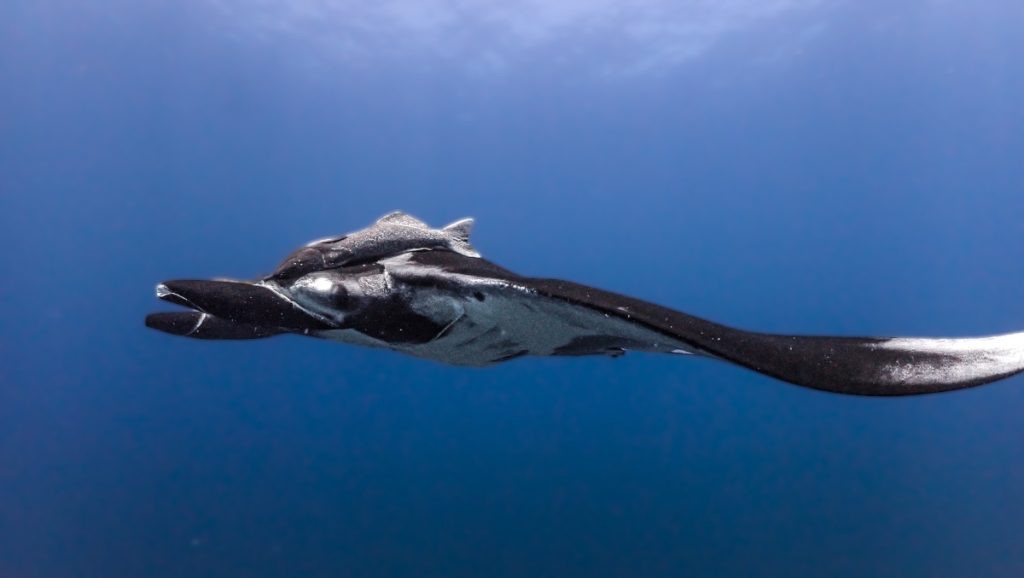Manta ray diving is an incredible experience, and Costa Rica offers some noteworthy spots where these magnificent creatures can often be seen.
In this article, we’ll explore 3 key locations known for manta ray sightings and delve into the research being conducted on their behavior. Researchers are studying their behavior to understand why they gather in specific areas, possibly as cleaning stations or mating grounds.
Join us as we uncover the best places to dive with manta rays in Costa Rica and gain insights into their fascinating habits!

The Distribution of Manta Rays in Costa Rica
While manta rays are present on both the Pacific and Caribbean sides of Costa Rica, sightings on the Caribbean coast are rare. Their known distribution suggests they are present, but they are seldom observed. On the Pacific side, from the southern Osa Peninsula to the northern Guanacaste region, manta rays are more frequently encountered, with specific sites being particularly popular for diving with manta rays.
Key Diving Spots for Manta Ray Sightings
Manta Ray diving at Caño Island
One of the top spots for diving with manta rays is Isla del Caño, located off the Osa Peninsula.
During this year the island has seen an unusually high number of manta ray sightings, making it one of the best places to dive with manta rays.
Researchers believe that the waters around Isla del Caño may serve as both cleaning stations and mating areas for manta rays, which explains the large numbers of these animals seen here. The consistency of sightings has made Isla del Caño a go-to destination for manta ray scuba diving enthusiasts.

Manta Ray Diving at Herradura
Further north, in Herradura, manta ray sightings are possible, but they are particularly common between February and March.
Although not as consistent as other regions, diving manta rays in Herradura during this period offers a higher chance of encountering these graceful creatures, especially when the waters are calm.
Cabo Blanco (Only for Researchers)
One of the most important places for manta ray research is Cabo Blanco Absolute Reserve, where manta rays are frequently observed. However, this area is closed to tourism due to conservation efforts, making it inaccessible to divers.
Despite this, the data gathered from this region contributes greatly to our understanding of manta ray behavior.

Another prime spot for manta ray scuba diving is the Catalina Islands. These islands, known for their clear waters and year-round diving conditions, are particularly popular during the rainy season when manta ray sightings peak. Divers from all over the world come to the Catalina Islands to dive with manta rays, especially as the number of manta ray encounters here tends to be higher than in other regions.
Ongoing Research and Behavior
Although much is still unknown about manta rays, it is thought that their frequent visits to specific locations are linked to cleaning stations, where smaller fish help remove parasites from their skin. This symbiotic relationship plays a key role in manta ray health and may explain why certain areas attract these majestic animals more than others.

Additionally, researchers believe these spots may also serve as mating areas. Acoustic tagging and telemetry studies are being conducted to better understand the migratory patterns of manta rays and their reasons for visiting these specific sites. One location that has yielded significant data is Bajo del Diablo, located near Isla del Caño. During recent dives, I had the opportunity to participate in the tagging of mantas and the placement of cameras to monitor their behavior. On one occasion, we observed an impressive nine manta rays in a single dive, a rare and remarkable event for manta ray scuba diving.
Night Dive with Manta Rays
For those seeking a unique experience, night dive with manta rays might sound intriguing, but it is not offered by any operator in Costa Rica. This is due to the fact that manta rays are typically observed in more advanced dive sites, where conducting night dives would pose significant safety risks. Locations like the Catalina Islands or Bajo del Diablo are known for strong currents and deeper waters, making night diving impractical and dangerous. While manta ray night diving is a popular activity in other parts of the world, in Costa Rica, divers can enjoy spectacular encounters with mantas during the day in safer conditions.
Conservation and the Future of Manta Rays
Manta rays face numerous threats from human activities, including fishing, habitat destruction, and climate change. Additionally, they are highly susceptible to becoming entangled in fishing nets, ropes, and other marine debris, or being struck by boats, which can cause serious injury or death. Conservation efforts are essential to ensure their survival. In Costa Rica, organizations like Mantas Costa Rica are actively involved in the study and protection of these animals. As divers, it’s our responsibility to engage in sustainable practices while promoting the protection of these creatures to ensure future generations can enjoy manta ray scuba diving.

Whether you’re diving at Isla del Caño, Catalina Islands, or exploring the waters around Bajo del Diablo, every encounter with manta rays is a reminder of the ocean’s rich biodiversity and the importance of conservation. By supporting ongoing research and engaging in responsible manta ray scuba diving, we can help protect these incredible animals for years to come.

As a Costa Rican diving instructor, I’ve had the privilege of exploring nearly all of my country’s underwater treasures, including the incredible Isla del Coco. After spending a decade guiding diving tours and sharing my love for the ocean, I co-founded a dive center that has grown into one of the most respected in Costa Rica. Together with my brother, we also launched Saltwater Connection, an online travel agency focused on marine adventures. Beyond Costa Rica, I’ve been fortunate to dive around the world, and when I’m not underwater, I find peace in sailing. One of my greatest joys is to show visitors the beauty of Costa Rica, offering them a fresh and unique perspective.

